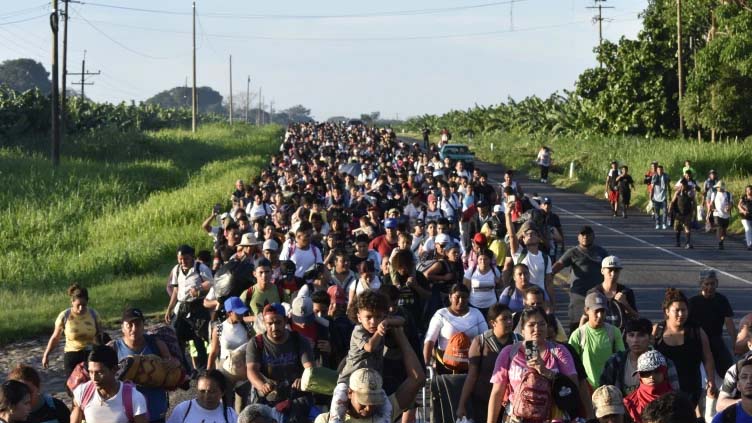US expands area in Mexico to apply for border asylum appointments, hoping to slow push north

World
Mexico has been asking the U.S. to expand the app’s access to the south
CIUDAD HIDALGO, Mexico (AP) — As soon as she stepped onto Mexican soil this week, Venezuelan migrant Yuri Carolina Meléndez downloaded the U.S. government’s app to apply for asylum appointments.
The CBP One app has been around, but as of Friday migrants in Mexico’s southernmost states bordering Guatemala will be able to apply for appointments. Previously, they had to be in central or northern Mexico.
“I have to wait to see if it really works,” the woman said while resting under a tree with her 16- and 18-year-old daughters along a border highway leading to the city of Tapachula this week.
Mexico has been asking the U.S. to expand the app’s access to the south in an attempt to relieve the pressure migrants feel to continue north to at least Mexico City. In recent years, the Mexican government has tried to contain migrants in the south farther from the U.S. border, but the lack of work opportunities and housing in southern cities like Tapachula have pushed migrants north.
Mexico hopes that if migrants can wait for their appointments in the south they might not risk getting snagged by authorities without papers or by organized crime groups that prey on migrants travelling north. With an appointment, they could, in theory, move without interference.
Germin Alemán, a 31-year-old from Honduras travelling with his wife and three children, planned to register as soon as they reached Tapachula. “We’re going to apply here, we’re going to wait for the appointment,” he said as they walked from the border toward Tapachula.
Others, however, still felt the pressure to get farther north. Many migrants often carry big debts and need to start paying them off as soon as possible. Meléndez, for instance, said she planned to keep moving to improve her chances of finding work.
CBP One has been one of the measures of greatest impact in U.S. efforts to bring order to the growing demand for U.S. asylum along its southwestern border.
Giovanni Lepri, the Mexico chief for the Office of the U.N. High Commissioner for Refugees, said it could mean fewer risks for migrants headed north. But he added that dealing with migration requires diverse measures, “those like stabilizing the countries of origin, protection in the transit countries and options for regularization and asylum in destination countries.”
For Noemí Ramírez, a 47-year-old from El Salvador, hearing that she could begin her asylum application from Mexico’s Chiapas state led her to immediately set off with her 19-year-old daughter for Tapachula.
“We’re going to wait until we get an appointment. I’m not thinking of going any farther,” she said as they walked, worrying about the violence they could face along the way. “I’m not going to risk it with my daughter. We’re alone.”



